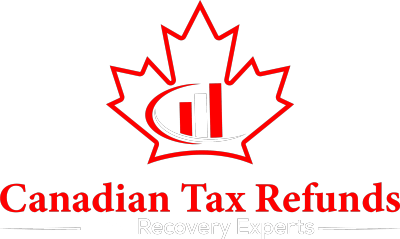Maximizing your tax refunds
When it comes to filing your Canada tax recovery claim, it’s important to have all of the information you need regarding the tax year with the recovery claim. This includes your original return, any supporting documentation you supplied, and all other important tax details for that specific year. You can also use our services to help you file all types of tax recovery reclaims. We’ll walk you through the steps to help you file your claim and get the money back that belongs to you.
If you are a Canadian citizen or a permanent resident, then you can be eligible to have your past returns reviewed and may claim a tax recovery refund. Getting your past returns for tax recovery purposes is especially important to make sure you have not overpaid tax, or missed any benefits and credits that apply to you. This is a necessary process if you think you may have missed anything, since even small mistakes in taxes can turn into large refunds. In order to file a Canada tax recovery claim, you will need to know the specific details of your case. You will also need to be familiar with the Canada tax law and provisions. This blog will provide you with the necessary information to file a Canada tax recovery claim.
What to do if you’re having a problem with your Canada tax refund
If you’re having a problem with being able to claim the proper refund you think you deserve to claim, it could be necessary to have a tax expert review your taxes. Getting a tax review done to see if there is in fact a tax recovery claim on past tax returns can make a huge difference in someone’s lives should a tax recovery claim be accomplished. This is a way to get your money back from the Canada Revenue Agency, that is rightfully yours to claim. In order to file a tax recovery claim, you may need to provide some information about the portion of your taxes that may have been filed in error. You’ll also need to provide your original tax return and all supporting documents. You can also ask for a letter of support. If you’re able to prove that the tax year in question was filed improperly, or benefits were not claimed, the Canada Revenue Agency will give you your money back.
When you file a Canada tax return for refund purposes, it’s important to have all of the information you need. This includes your adjusted income, your proof of residence, your social insurance number, and your contact information for the CRA. The CRA is going to need all of this information in order to process your refund. However, it’s also important to do your research before you file your refund. You should never file a claim without first consulting with a tax expert. A tax expert can help you with all of the paperwork needed to file a tax recovery claim and produce your refund. You can also find a tax return helpline on the CRA website. If you have a problem with your refund, you can contact the CRA by phone, online, or in person.

Pursuing a Tax Recovery Claim for Additional Tax Refunds
If you have additional Canada tax refunds for a particular tax year, it’s important to file a tax recovery claim as soon as possible. A tax recovery claim can help you get your money back. Claiming your Canada tax refund can help you get your taxes reduced. To file a tax recovery claim, you’ll need to follow these steps:
- Have someone review your past tax returns.
- Get all the tax recovery information you need to help you file your tax recovery claim.
3 File the tax recovery claim. This can help you get your money back. - Get your refund
How to get your refund back
When you file a Canada tax return, you need to follow the specific instructions that are provided. Due to the details involved with filing a Canada Tax Return, it is good to first consult with a tax expert or accountant to discuss your return. There may be a few things you can do in order to help get your refund back, sometimes just providing the right information can change a tax return from no refund or owing to a tax refund. That is why it is so important to check the return and make sure that everything is correct. If there are any errors, you need to fix them as soon as possible. Next, you need to file a tax recovery claim that is specific to that portion of your personal taxes. Once you file the tax recovery claim, the CRA will process your recovery claim and make an assessment. Should they see the tax recovery claim was done properly then, the CRA will make the final adjustments and send you the Tax refund. You can also use this document as a guide in order to help you file your tax return.
If you have a Canada tax refund, you need to file an amendment pertaining to your specific tax recovery claim. A Canada tax recovery claim is a way for you to get your refund back. You can file a claim online or via mail. In order to file a claim, you may need to:
1) provide your contact information
2) provide your documents
3) provide your income and expenses
4) provide your proof of claim
5) provide your proof of tax liability
6) provide your proof of tax refund
7) provide your proof of tax recovery
8) provide your contact information for the Canada Revenue Agency
9) provide your contact information for the taxpayer
You can also find more information on how to file a Canada tax recovery claim on the Canadian Tax Refunds website.
Conclusion
Having a tax refund can be a real blessing for an individual, especially when they are down on their luck. A tax refund claim can be filed at any time going back the last 10 years, so it is important to file your claim if you believe you are entitled to one. You can read more about filing for a Canada tax recovery claim by visiting Canadian Tax Refunds.
